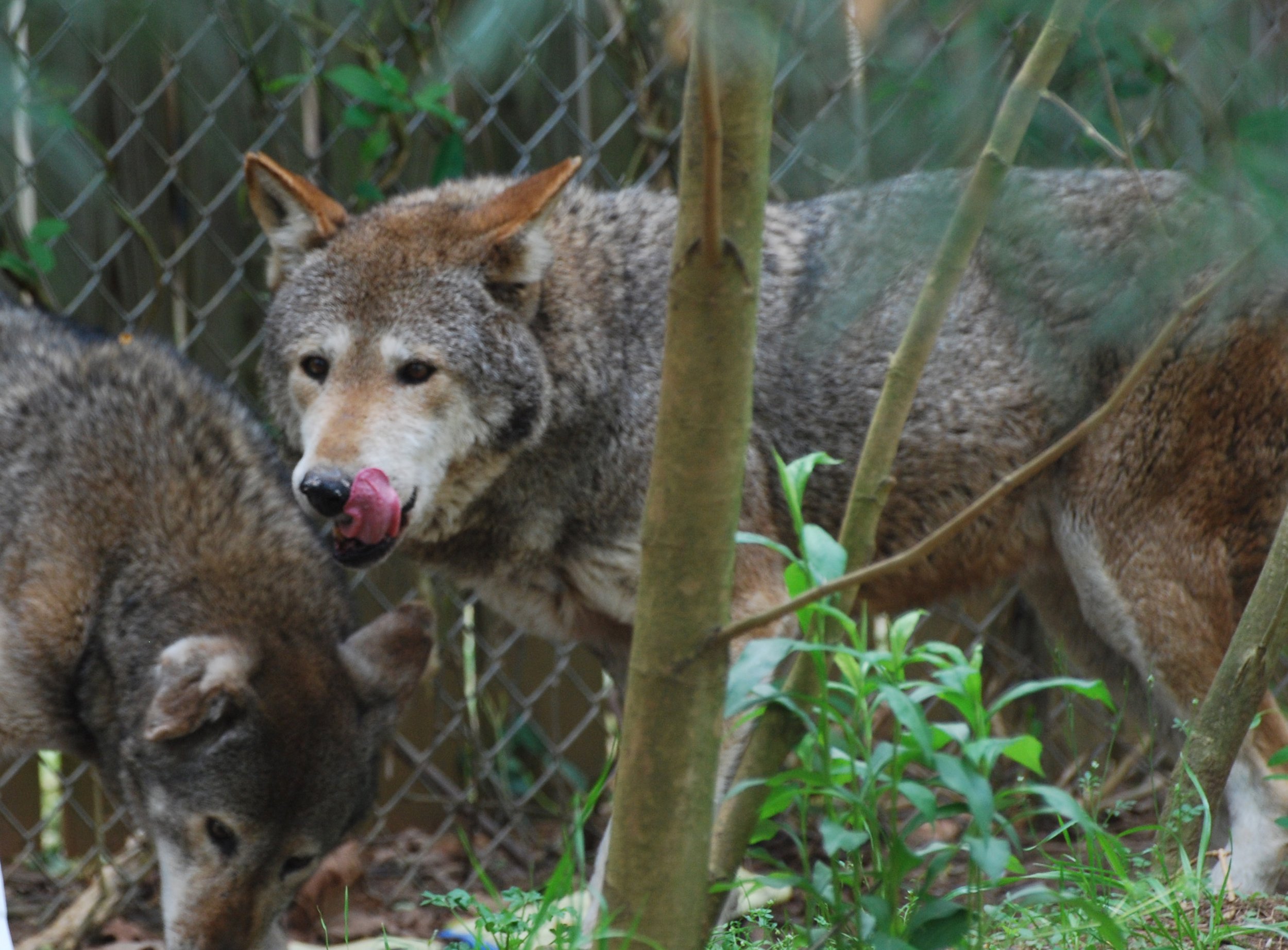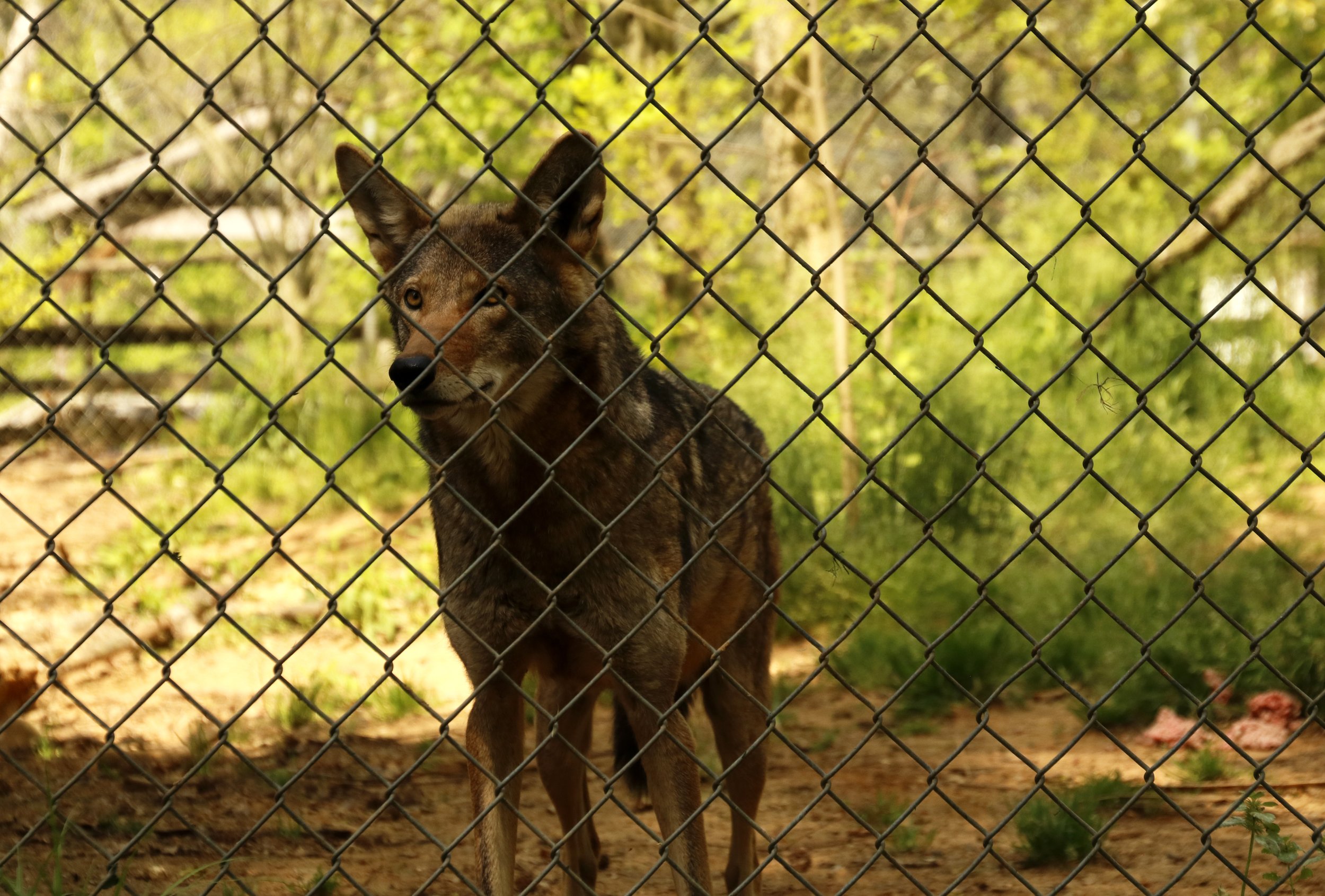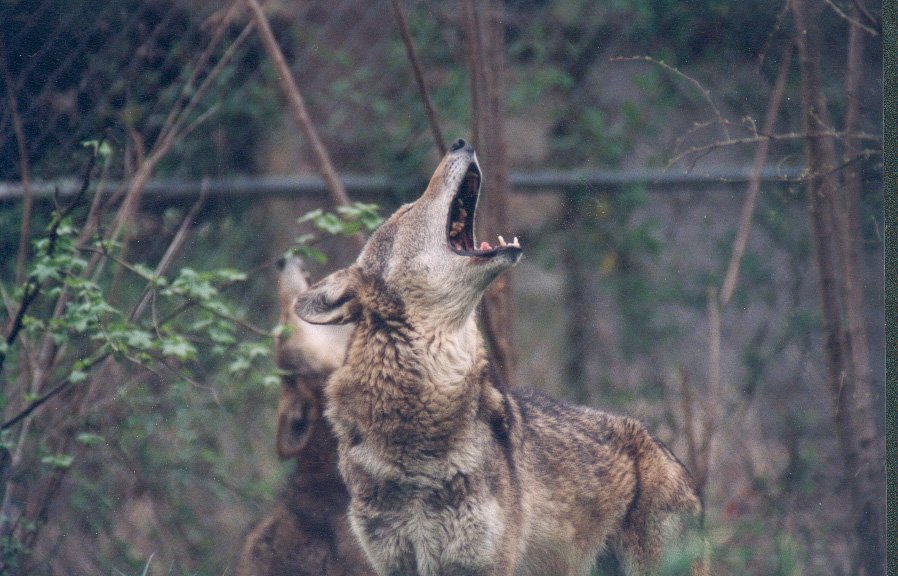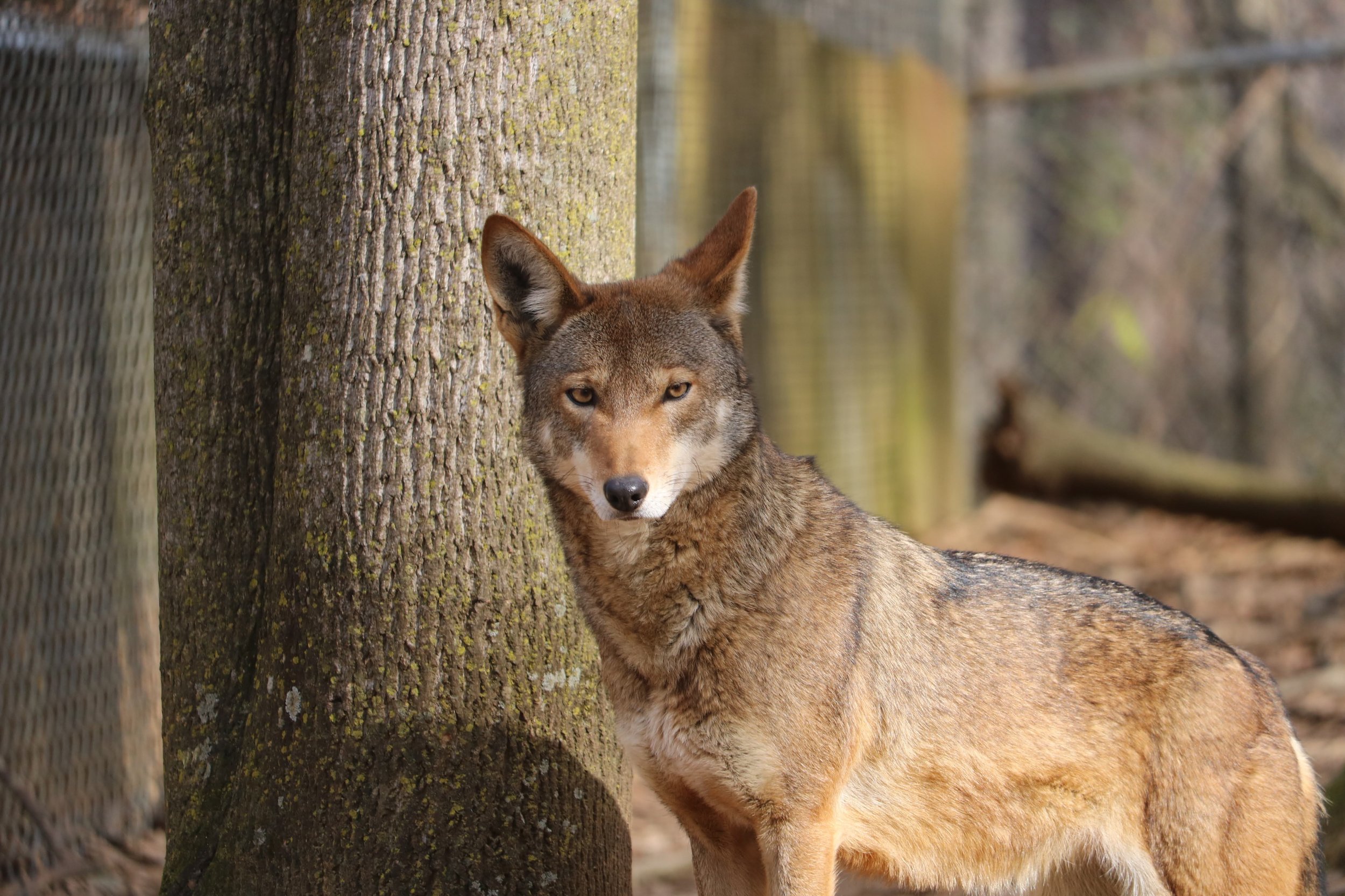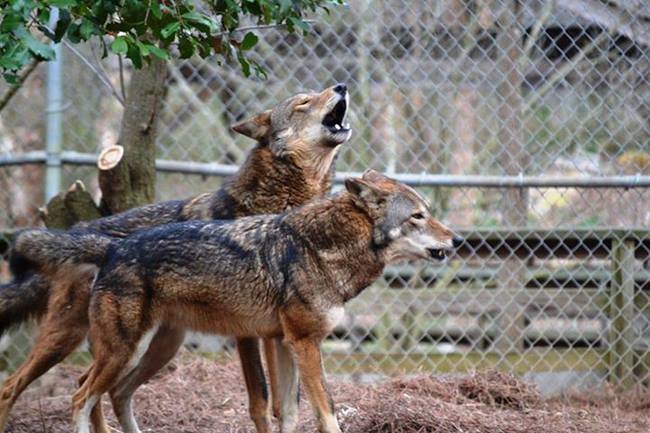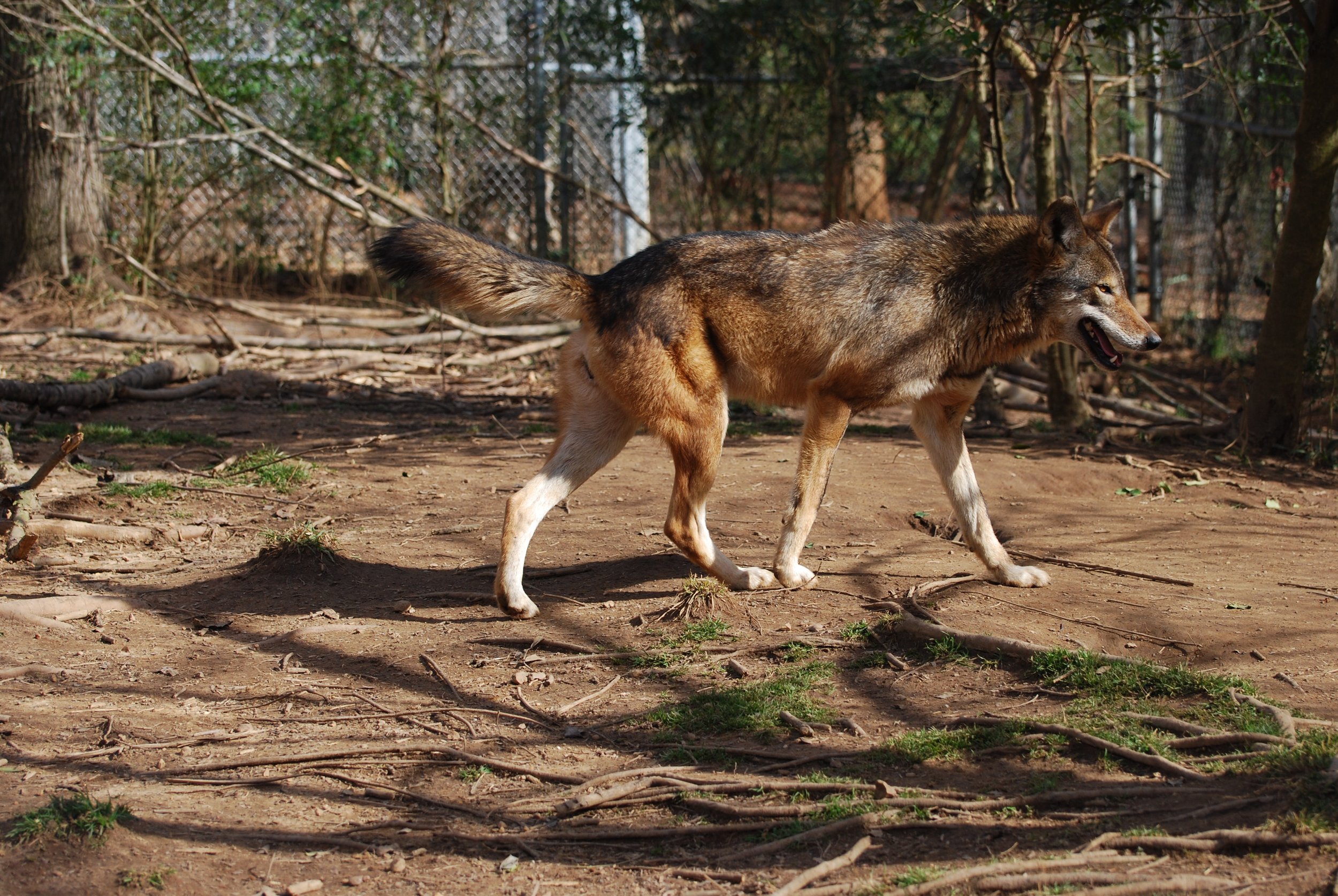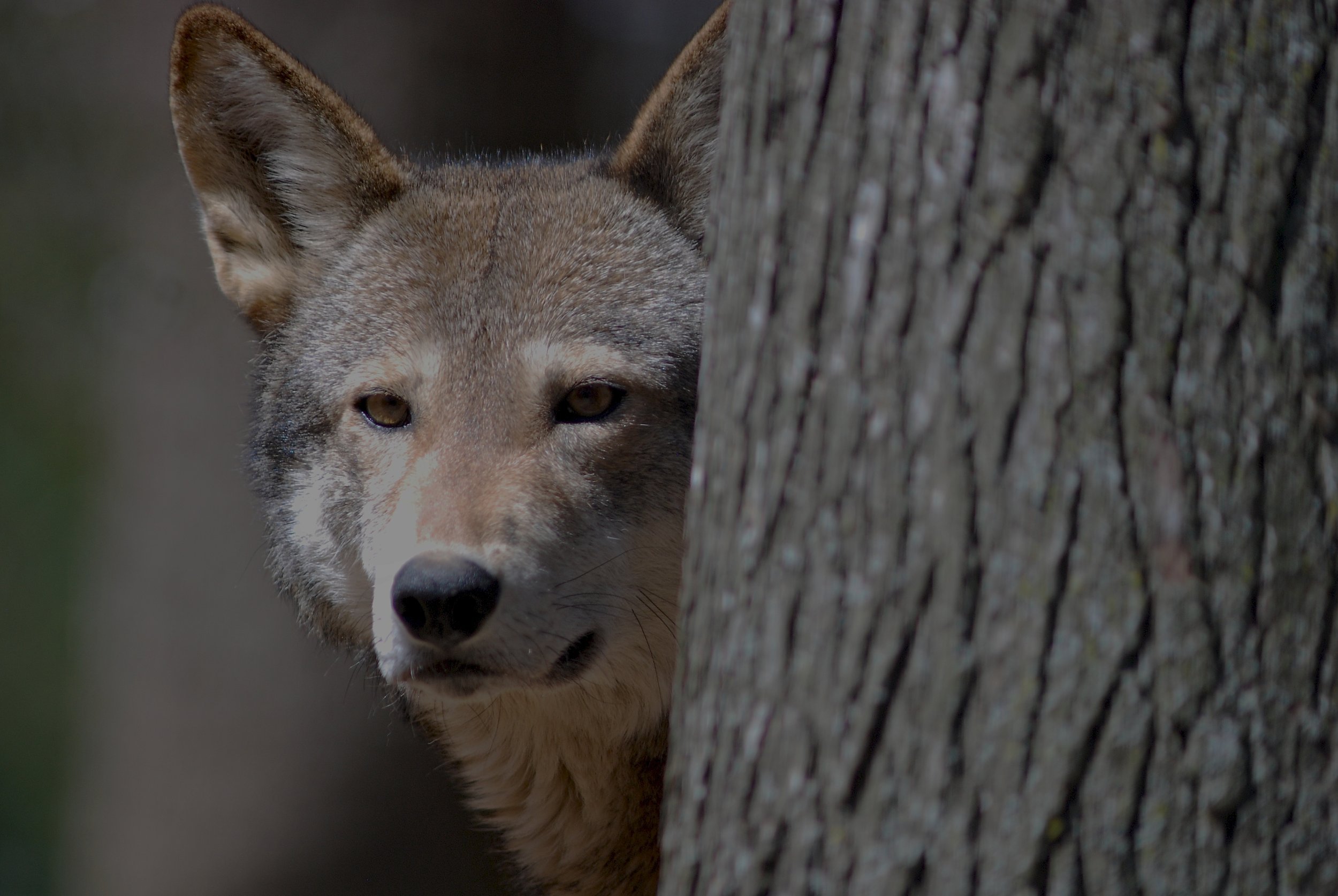Stories from the Forest: Tish and the Red Wolves
As we move toward the end of 2023, we’re looking back at some of the stories that defined the year. This week, Tish Gailmard, our Learning and Engagement Specialist, reflects on the Red Wolf SAFE program and what the future looks like for our wildlife area. Written by Jennifer Brown as a story from an interview with Tish Gailmard.
I love to focus on the circularity of the work that we do through our wildlife conservation and education programs at Reflection Riding. Successfully bringing Red Wolves back from near extinction will fill a gap in our ecosystem, right here in the southeast where they are native and once roamed wild. Red Wolves predate on deer, raccoons and other rodents. Without this apex predator, we see these prey species increase. An increased deer population will overbrowse trees and shrubs, often causing those plants to die. When these plants die, songbirds lose their shelter and food source; river banks can erode from the lack of supporting vegetation, causing dirty water and, consequently, dirty drinking water for us. Red Wolves are ecosystem engineers. Their presence on the landscape maintains balance creating a healthy environment for all plants and animals. This is just one of the reasons why I am so passionate about the work we are doing to restore their population.
One of my favorite Red Wolf stories from this year starts with a female pup that was born at one of the Red Wolf SAFE facilities. The Red Wolf SAFE (Saving Animals From Extinction) program is a collaboration of 50 cooperators working together to increase Red Wolf populations under human care. This particular puppy was fostered into a wild litter of the same age, under two weeks old—while her eyes were still closed and her ears were sealed. She grew up wild with this litter and made it to adulthood.
All wild Red Wolves live in one location on 1.7 million acres of public and private land in northeastern North Carolina. This location and one island propagation site are the only places in the world where wild Red Wolves live. When it is deemed necessary to release adult Red Wolves into the wild, acclimation pens are utilized. These temporary enclosures provide a safe place for Red Wolves to learn their surroundings before being released into the wild.
Sometimes these pens are utilized as a honeymoon suite for a wild Red Wolf and a Red Wolf from human care with the hopes they produce a litter in the pen, then the whole family can be released once the pups are a certain age. Recently, a female that was born under human care, fostered into a wild litter as a pup, and lived to adulthood, was captured and placed in an acclimation pen with an adult male from under human care. They bred and produced a litter in the acclimation pen, a very exciting event. Even more exciting is what happened once the family left the acclimation pen. The mother wolf secured her babies and took the father out to show him where to hunt since he was unfamiliar with the area and had no prior hunting experience. As he learned from her where and what to hunt, she passed the torch to him and stayed back with her pups. The male wolf, who was raised under human care, took over the role of hunter. That’s full circle! What a beautiful example of the Red Wolf SAFE’s conservation work.
I have been with the animals at Reflection Riding for over two decades now. Our work with our animal ambassadors has grown and evolved in so many ways. We provide high-level care for all of our animals, and many of them live well beyond their expected years. Unfortunately the wildlife area—as it currently sits—is in a floodplain and is greatly in need of modernization and optimization. That means during the rainy season, staff are on high alert, keeping track of the creek levels in the event the animals may need to be moved. As an organization, we are very concerned about the realities of climate change and the effect longer and rainier wet seasons will have on this area.
As we look toward the future, the plan is to relocate the native animal enclosures out of the floodplain to reduce the risk of flooding, promote animal health and safety, and provide a more diverse range of habitats. Our Framework for the Future plan outlines animal habitats and enclosures that will allow us to provide the animals the same high level of care but with more efficiency which will make the job of caring for the animals easier.
I am very proud of the work we do every day to protect and restore Red Wolf populations to their native territories! I’m excited to think about the efficiencies and impact we can create in the future with access to a resilient, modern facility. Our donors have come alongside us to make this conservation work possible over the past 20 years and I’m so proud to stand with them as we make our way to a more sustainable future together.




